The Tesla Model S
by Andrew Boyd
Today, we go for a spin. The University of Houston presents this series about the machines that make our civilization run, and the people whose ingenuity created them.
I was recently making my way through a shopping mall when I happened upon something that completely caught me off guard: a store that sold cars. Not toy or model cars, but actual cars. Only two were on display, but there were private meeting spaces where a buyer could choose the color, interior trim, and so on. Delivery of a made-to-order car took six to eight weeks. The clean, simple design of the surroundings made me feel as if I'd walked into an Apple store; and the young "product specialist" who helped me reminded me more of a transplant from an Apple Genius Bar than of a car salesman.
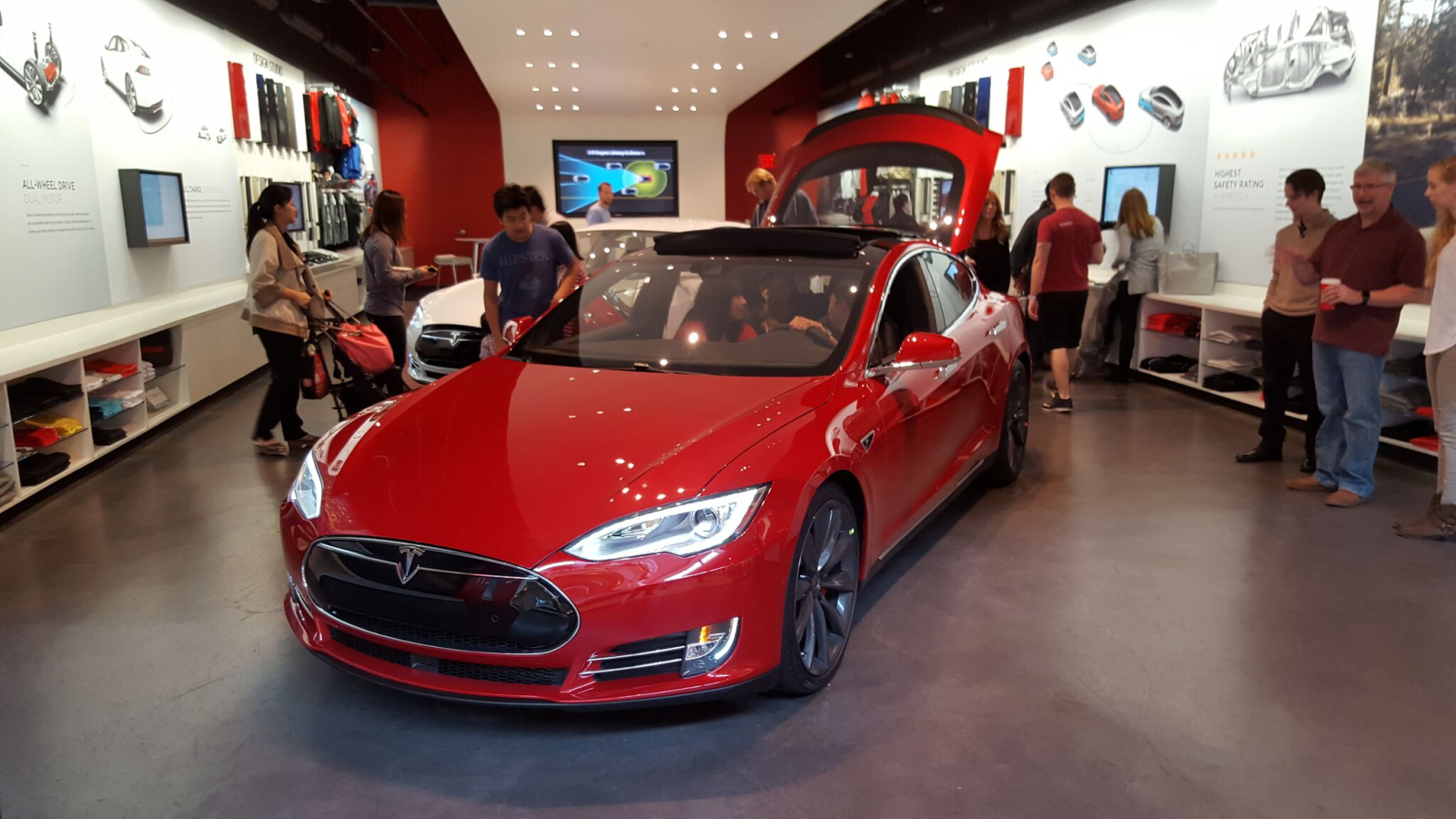
Red Tesla Photo Credit: Andy Boyd
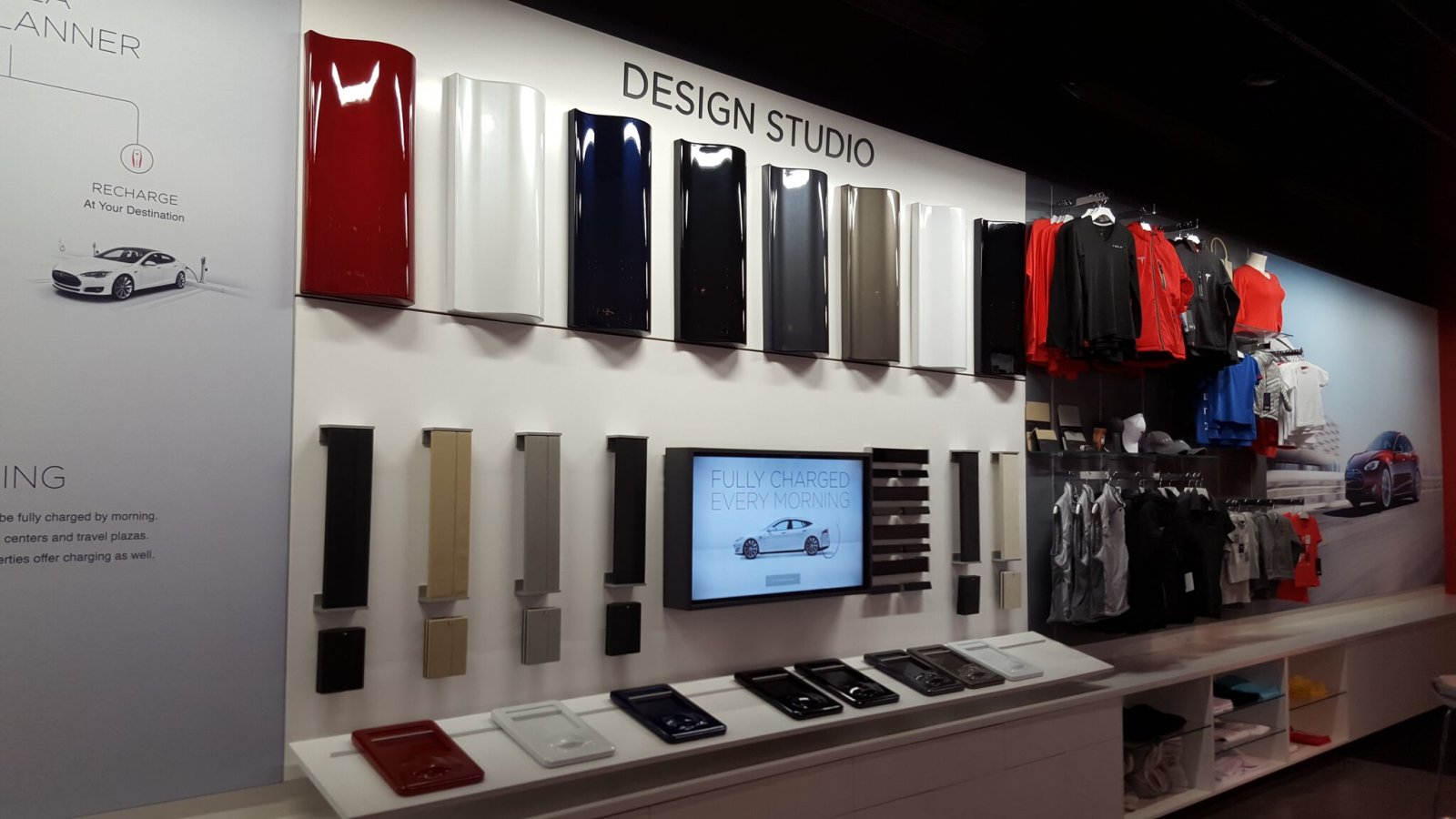
Tesla Design Studio Photo Credit: Andy Boyd

Tesla Fueling Station Photo Credit: Andy Boyd
The store was the creation of Tesla Motors, the luxury electric car maker that's received so much attention. And from a technological perspective the attention is well deserved.
Electric cars are very different from their gas powered, internal combustion cousins. Internal combustion engines are powered by controlled explosions. Gas flows from the tank to the engine where it's ignited. Remnants of the explosion are carried away through the exhaust system. Electric cars have no need for all that plumbing since they produce power using magnetic fields created by the flow of electricity. Since explosions are replaced by the movement of electricity, there's far less to wear out in an electric motor, greatly reducing car maintenance. The tradeoff is that even rechargeable batteries eventually wear out, and they can be expensive to dispose of and replace.
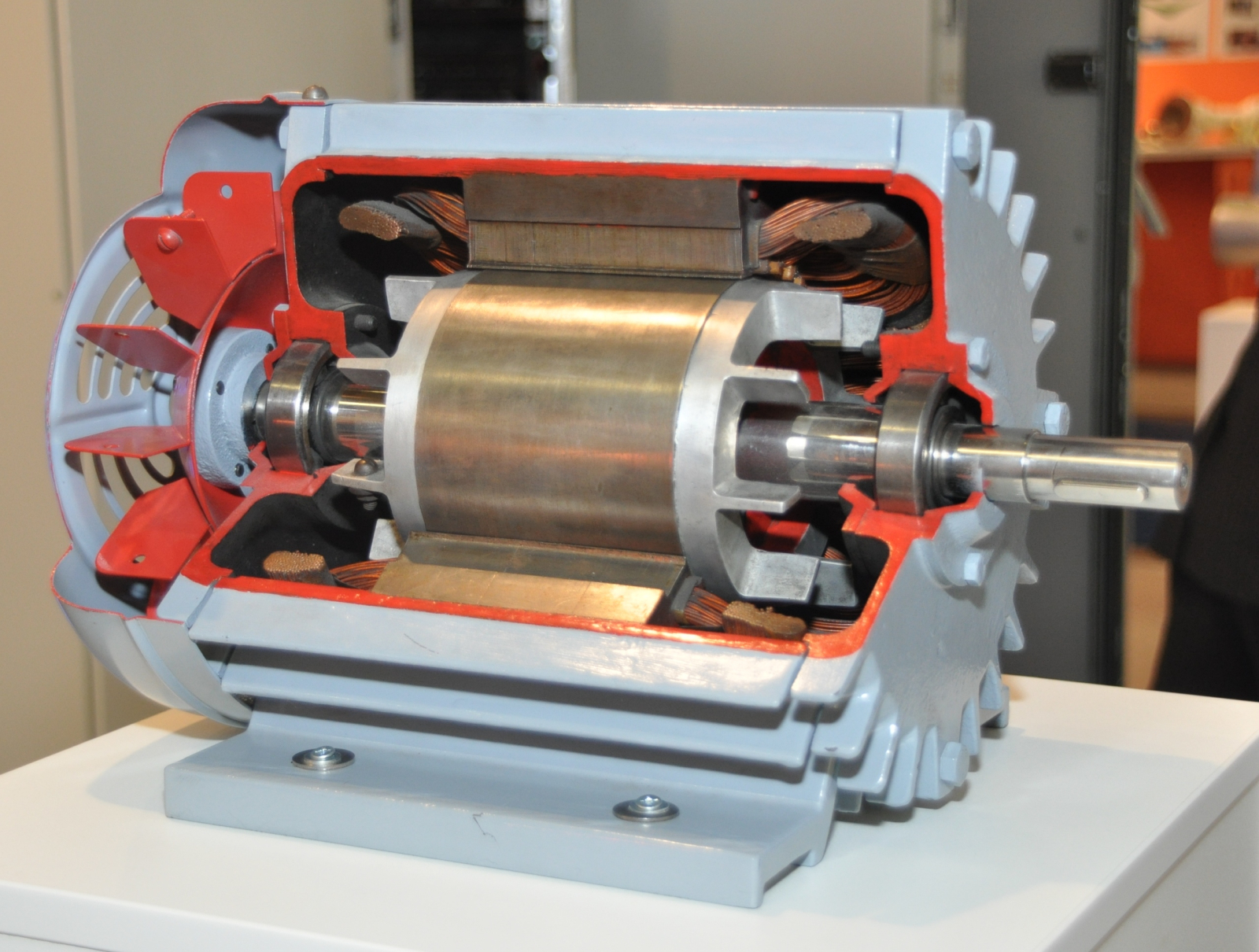
Electric Car Motor Photo Credit: Wonderfulengineering.com
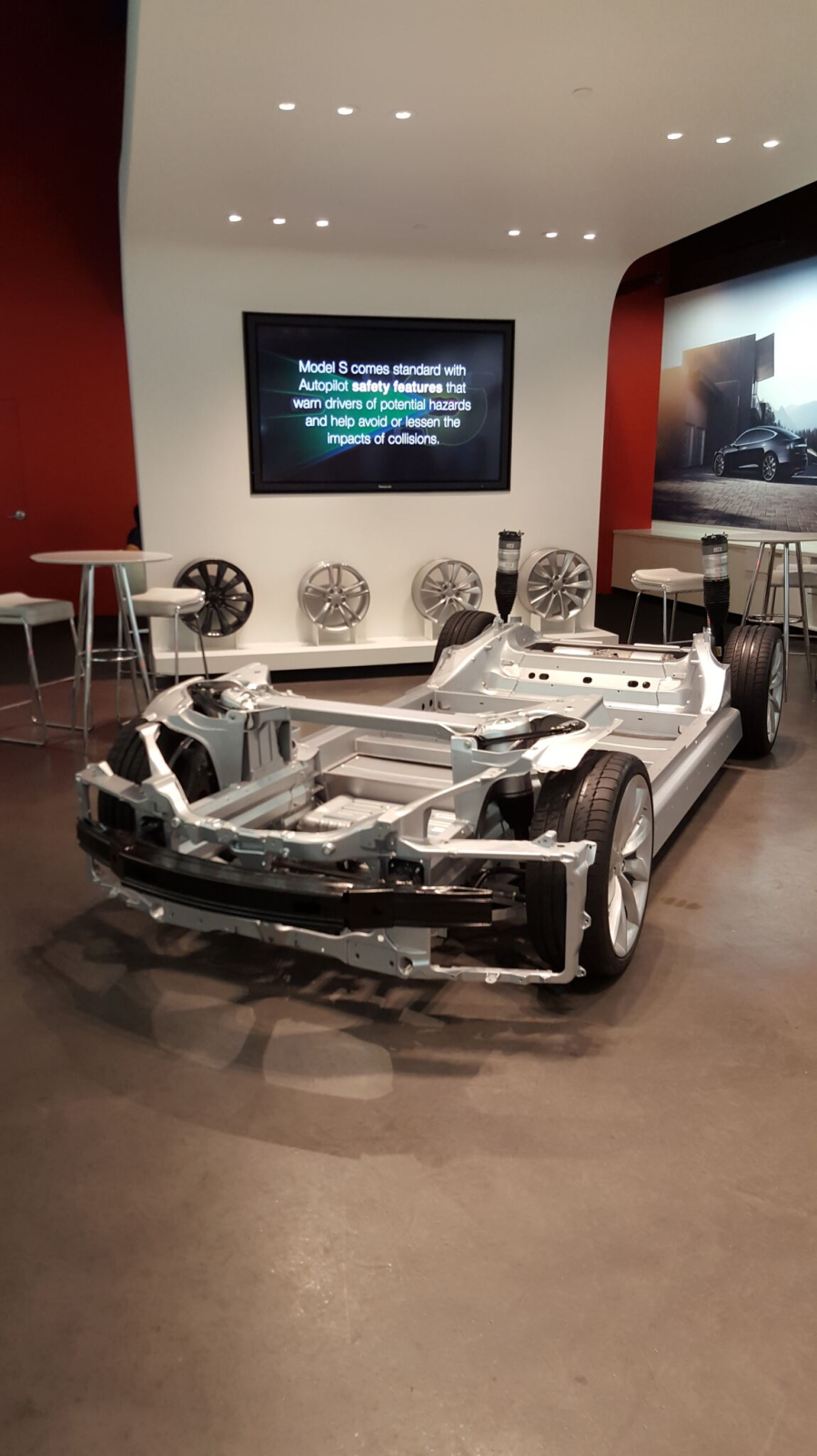
Tesla Chasis Photo Credit: Andy Boyd
When I was given the chance to take a Tesla Model S for a spin I was only too happy to oblige. As a Prius owner I'm familiar with the sound and feel of a car running on batteries. Acceleration is quiet and smooth — and sluggish. Not so in a Tesla. The mid-level Model S will take you from 0 to 60 in a literally breathtaking 4.2 seconds. Buy the high performance version and throw it into "ludicrous" mode and that drops to a mere 2.8 seconds. It really is called ludicrous mode by the way, a name presumably taken from Mel Brooks' Star Wars parody, Spaceballs. At 2.8 seconds, your head is pushed into the headrest with the same force gravity pushes your bottom into the seat. Acceleration like that puts the Model S in a class with the fastest sports cars ever built for the road. Ferrari. Lamborghini. Porsche. And now Tesla. And even more remarkable is that Tesla achieves its performance with a large, comfortable sedan sporting plenty of trunk space — both front and back.
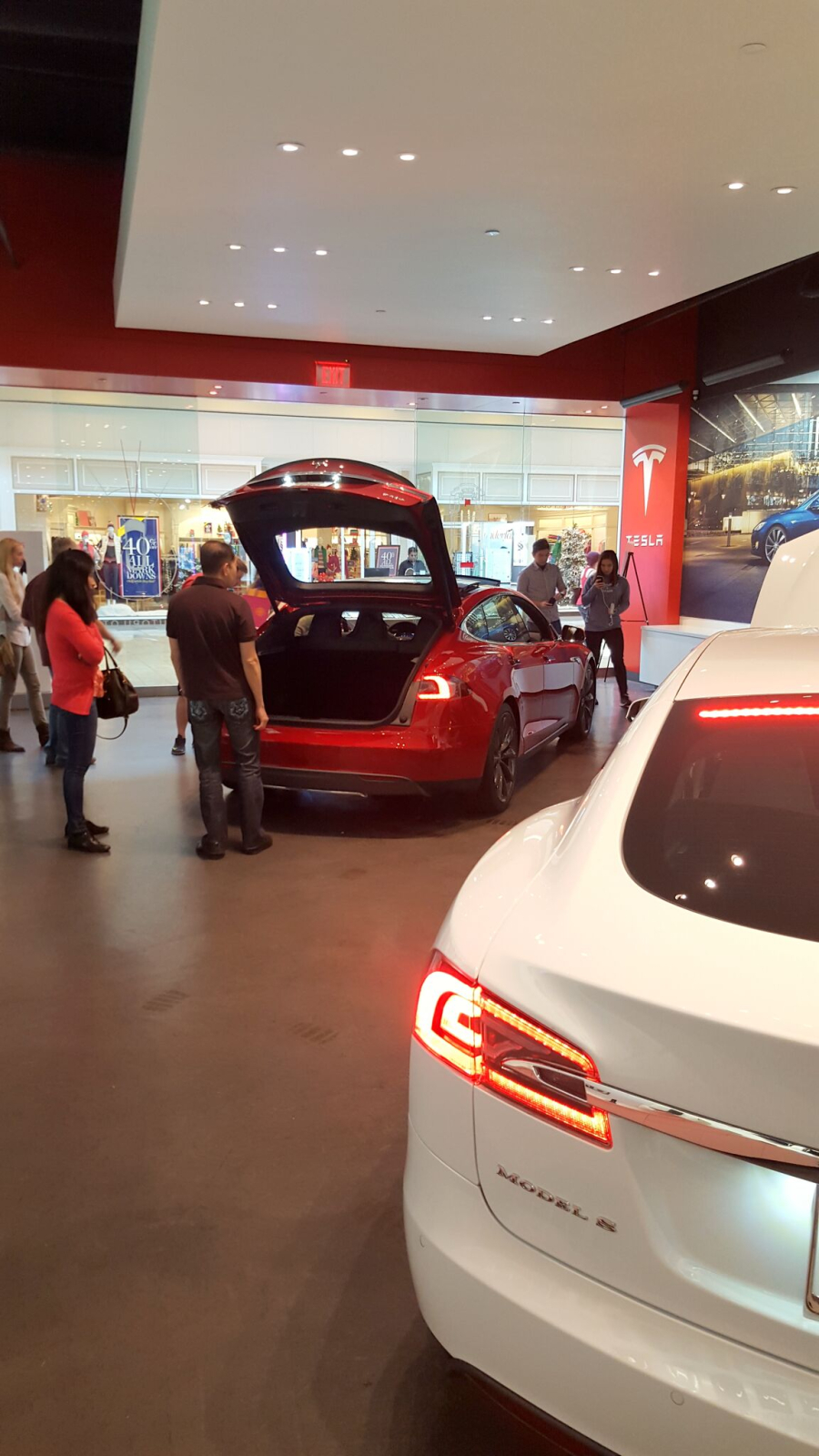
Storage space Photo Credit: Andy Boyd
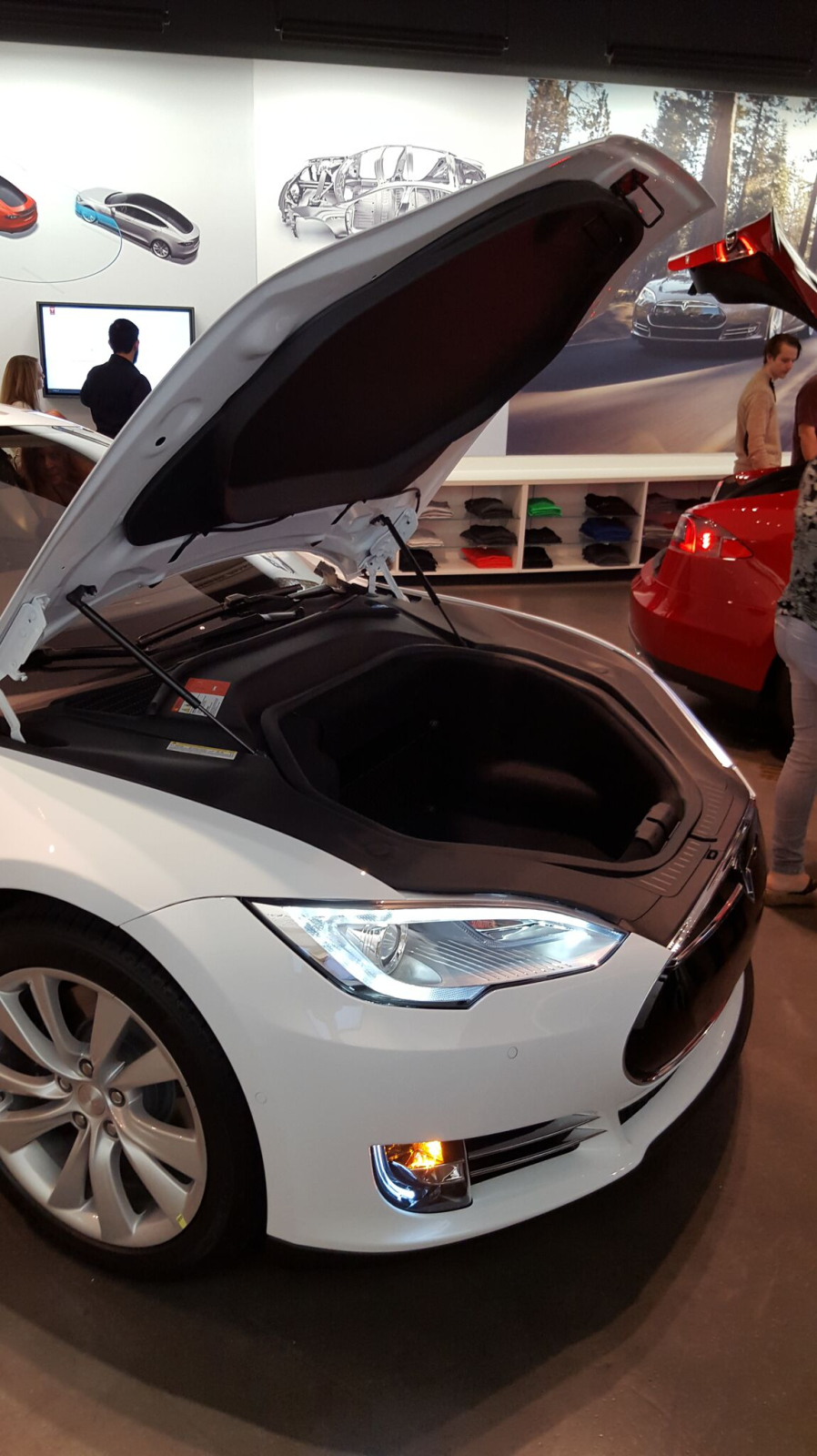
Tesla Front Trunk Photo Credit: Andy Boyd
I'm not sure of the need for ludicrous speed, but I admit driving a Tesla was a lot of fun. More importantly, my perception of electric cars has changed. Technologically, they're not just viable alternatives to conventional gas cars, they're strong competition. We'll be seeing more on the road as car companies continue to refine the technology. And Tesla Motors is clearly off to a fast start.
I'm Andy Boyd at the University of Houston, where we're interested in the way inventive minds work.
(Theme music)
Different sources reported different times for acceleration from 0 to 60 miles-per-hour. All are in the neighborhood of 3 seconds. Here I've used the number provided by Tesla from the website: https://www.teslamotors.com/models. Accessed December 1, 2015.
Thanks to Ajju Hussain, Derrick Johnson, and Nathan Kobza of Tesla Motors, Houston, for their help with the test drive and for answering my questions.
Mel Brooks' "ludicrous speed" scene from Spaceballs can be viewed at: https://www.youtube.com/watch?v=ygE01sOhzz0. Accessed December 2, 2015.
This episode was first aired on December 9, 2015